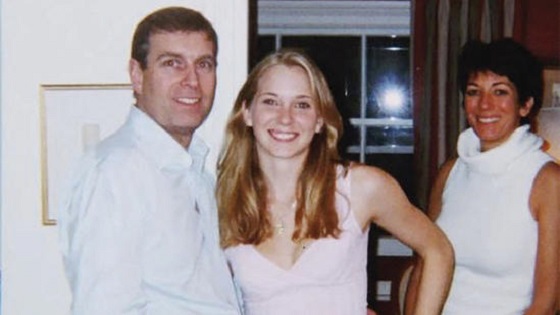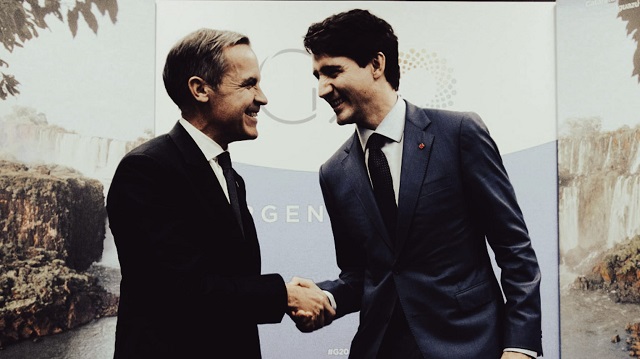Great Reset
From Border Security to Big Brother: Social Media Surveillance

 By Christina Maas
By Christina Maas
Was the entire immigration reform rhetoric just a prelude to broadening government spying?
Let’s take a closer look: immigration became a hot-button campaign issue, with plenty of talk about “welcoming” migrants, combined with a healthy dose of hand-wringing about border security. Now, however, critics are uncovering what looks like the real priority—an enhanced federal surveillance operation aimed at monitoring not just new arrivals, but American citizens too. In the name of keeping tabs on who’s coming and going, the administration sank more than $100 million into a social media surveillance system designed to keep an eye on everyone.
The Department of Homeland Security (DHS) first flirted with these powers under Trump’s presidency, when ICE officials began monitoring social media under the guise of protecting the homeland. The Biden-Harris administration, having previously expressed horror at Trump-era excesses, took a softer tack, but actually increased mass surveillance. They rebranded the initiative as the Visa Lifecycle Vetting Initiative (VLVI), a name that practically exudes bureaucratic charm while implying a methodical, visa-centric approach. But if it was just an immigration program, why was it scanning communications between Americans and their international friends, family, or business contacts?
According to a lawsuit from the Electronic Frontier Foundation (EFF), the program evolved into something much larger than a mere visa vetting system. The scheme entailed broad surveillance of communications and social media activity, conveniently sidestepping pesky things like “probable cause” or the First Amendment. “Government officials peering through their correspondence with colleagues visiting from overseas and scrutinizing the opinions expressed in their communications and their work,” read a lawsuit that laid bare the VLVI’s invasive nature. What started as a system to vet foreigners’ eligibility to enter the U.S. quietly metastasized into an excuse to monitor anyone who dared connect across borders.
We obtained a copy of the lawsuit for you here.
We obtained a copy of documents batch one for you here.
We obtained a copy of documents batch two for you here.
Of course, in true Washington style, this story wouldn’t be complete without a twist of political theater. The administration’s rhetoric has leaned heavily on a supposed dedication to protecting civil rights and personal freedoms—while simultaneously doubling down on programs that do the opposite.
A Little Privacy, Please? DHS Puts American Social Media on the Watchlist
Ah, the Fourth Amendment — one of those quaint, old-timey Constitutional protections that grant Americans the basic human right not to be poked, prodded, or probed by their own government without a solid reason. It’s a promise that Washington will think twice before sifting through your life without a warrant. Yet somehow, in the age of social media, this Fourth Amendment right seems to be slipping into the hazy realm of memory, particularly when it comes to Uncle Sam’s latest pastime: keeping tabs on everyone’s online chatter under the banner of immigration vetting.
Welcome to the VLVI, a Homeland Security special that appears to have mistaken “security” for “surveillance.” This bureaucratic marvel was dreamed up as a means to monitor non-citizens and immigrants, ostensibly for national security. But according to recent lawsuits, it’s not just foreigners on the watchlist—average Americans now get to share the surveillance limelight too, all thanks to the Department of Homeland Security’s fondness for “indiscriminate monitoring” of citizen communications. And why? Because in the brave new world of VLVI, any American chatting online with an overseas connection might just be suspicious enough to keep an eye on.
A Sweeping “Security” Measure or Just Mass Surveillance?
Here’s where the Constitution starts to feel like an afterthought. Traditionally, the government can’t simply jump into your emails, texts, or online rants without a warrant backed by probable cause. The Fourth Amendment makes that pretty clear. But in the VLVI’s playbook, this notion of “probable cause” becomes something of a suggestion, more of a “nice to have” than a constitutional mandate. Instead, they’ve embraced an approach that’s less “laser-focused security effort” and more “catch-all dragnet,” casting wide nets over American citizens who happen to connect with anyone abroad—no illegal activity necessary.
Imagine you’re a US citizen messaging your friend in France about a summer trip, or maybe you’re just exchanging memes with a cousin in Pakistan. Under this initiative, that simple exchange could land you in a Homeland Security database, your innocent messages cataloged alongside the truly suspicious characters of the internet. And this is happening without any individual warrants, without specific suspicion, and in some cases, without probable cause. One might ask, exactly how does that square with the Constitution’s protections?
Privacy Protections? That’s for Other People
This is all a question of government trust and hypocrisy. The program began under a previous administration but was quickly shuttled along by the current one, despite its public stance championing privacy rights. There’s something ironic about politicians who rally for civil liberties in campaign speeches, only to maintain and expand government surveillance in office. The backlash has been predictably loud, and for good reason. Here we have a policy that effectively treats every social media user as a latent threat and a government that somehow expects people to swallow this as reasonable.
Critics have slammed this “watch-all” approach, pointing out that it doesn’t take a legal scholar to see how this might just cross a constitutional line or two. It’s not just Americans with foreign friends who are worried—it’s anyone who believes the government shouldn’t rummage through citizens’ lives without cause. “This type of program, where citizens’ digital lives are surveilled under a sweeping policy without individual warrants or specific reasons, sounds like an unreasonable search,” privacy advocates say.
The Price of a Free Society: Now With Less Freedom
Of course, VLVI supporters wave away these concerns with a dismissive “it’s for security” mantra as if that excuse covers every constitutional breach. And true, there’s little doubt that some level of monitoring is necessary to keep the truly dangerous elements out of the country. But we’re talking about ordinary people here, law-abiding citizens getting swept up in a bureaucratic machine that fails to distinguish between a casual chat and a credible threat.
When the government can tap into anyone’s social media profile because of a flimsy association, what’s left of the citizen’s “reasonable expectation of privacy”? In theory, the Fourth Amendment protects it; in practice, programs like VLVI gnaw away at it, one seemingly “harmless” violation at a time. If we keep pretending this is just another harmless tool in the security toolkit, we might as well hang up any remaining illusions about the privacy rights we’re supposedly guaranteed.
Just Another Step Toward a Surveillance State?
For Americans, it’s a chilling reminder that a swipe on Instagram or a chat on Facebook can mean more than just casual social interaction. For the DHS, it seems the message is clear: treat everyone as a suspect first, and figure out the legalities later. What happens to the expectation of privacy for ordinary Americans? It’s probably time we all start looking over our digital shoulders, because in the world of VLVI, “reasonableness” is a government privilege, not a citizen’s right.
armed forces
Yet another struggling soldier says Veteran Affairs Canada offered him euthanasia

From LifeSiteNews
‘It made me wonder, were they really there to help us, or slowly groom us to say ‘here’s a solution, just kill yourself.’
Yet another Canadian combat veteran has come forward to reveal that when he sought help, he was instead offered euthanasia.
David Baltzer, who served two tours in Afghanistan with the Princess Patricia’s Canadian Light Infantry, revealed to the Toronto Sun that he was offered euthanasia on December 23, 2019—making him, as the Sun noted, “among the first Canadian soldiers offered therapeutic suicide by the federal government.”
Baltzer had been having a disagreement with his existing caseworker, when assisted suicide was brought up in in call with a different agent from Veteran Affairs Canada.
“It made me wonder, were they really there to help us, or slowly groom us to say ‘here’s a solution, just kill yourself,” Baltzer told the Sun.“I was in my lowest down point, it was just before Christmas. He says to me, ‘I would like to make a suggestion for you. Keep an open mind, think about it, you’ve tried all this and nothing seems to be working, but have you thought about medical-assisted suicide?’”
Baltzer was stunned. “It just seems to me that they just want us to be like ‘f–k this, I give up, this sucks, I’d rather just take my own life,’” he said. “That’s how I honestly felt.”
Baltzer, who is from St. Catharines, Ontario, joined up at age 17, and moved to Manitoba to join the Princess Patricia’s Canadian Light Infantry, one of Canada’s elite units. He headed to Afghanistan in 2006. The Sun noted that he “was among Canada’s first troops deployed to Afghanistan as part Operation Athena, where he served two tours and saw plenty of combat.”
“We went out on long-range patrols trying to find the Taliban, and that’s exactly what we did,” Baltzer said. “The best way I can describe it, it was like Black Hawk Down — all of the sudden the s–t hit the fan and I was like ‘wow, we’re fighting, who would have thought? Canada hasn’t fought like this since the Korean War.”
After returning from Afghanistan, Baltzer says he was offered counselling by Veteran Affairs Canada, but it “was of little help,” and he began to self-medicate for his trauma through substance abuse (he noted that he is, thankfully, doing well today). Baltzer’s story is part of a growing scandal. As the Sun reported:
A key figure shedding light on the VAC MAID scandal was CAF veteran Mark Meincke, whose trauma-recovery podcast Operation Tango Romeo broke the story. ‘Veterans, especially combat veterans, usually don’t reach out for help until like a year longer than they should’ve,’ Meincke said, telling the Sun he waited over two decades before seeking help.
‘We’re desperate by the time we put our hands up for help. Offering MAID is like throwing a cinderblock instead of a life preserver.’ Meincke said Baltzer’s story shoots down VAC’s assertions blaming one caseworker for offering MAID to veterans, and suggests the problem is far more serious than some rogue public servant.
‘It had to have been policy. because it’s just too many people in too many provinces,” Meincke told the Sun. “Every province has service agents from that province.’
Veterans Affairs Canada claimed in 2022 that between four and 20 veterans had been offered assisted suicide; Meincke “personally knows of five, and said the actual number’s likely close to 20.” In a previous investigation, VAC claimed that only one caseworker was responsible—at least for the four confirmed cases—and that the person “was lo longer employed with VAC.” Baltzer says VAC should have military vets as caseworkers, rather than civilians who can’t understand what vets have been through.
To date, no federal party leader has referenced Canada’s ongoing euthanasia scandals during the 2025 election campaign.
2025 Federal Election
Carney Liberals pledge to follow ‘gender-based goals analysis’ in all government policy

From LifeSiteNews
‘We will continue to update the GBA+ tool to ensure it reflects the identities and values of all Canadians, including diversity as a core value.’
Prime Minister Mark Carney’s Liberal Party is promising to effectively mandate that all government policies and initiatives be measured using “Gender Based Analyses” before being approved and implemented.
The Liberal’s “Canada Strong” election platform, under the Gender Based Analyses (GBA) tab, pledges to “ensure that every measure in this platform will be implemented with a full GBA+ analysis – so that we can continue to build Canada strong, for all Canadians.”
“A Mark Carney-led government will support and champion all Canadians, including by reviewing policies and programs using an intersectional lens. We will continue to update the GBA+ tool to ensure it reflects the identities and values of all Canadians, including diversity as a core value.”
The GBA tab also mentions “2SLGBTQI+ people” four times, three of which are related to funding promises.
It notes that a Carney-led government would protect “the values” the Charter of Rights and Freedoms was “founded on – which are under threat – and ensuring the protection of women, people with disabilities, racialized and Indigenous communities, and 2SLGBTQI+ people.”
Carney already stated his government would provide sterilizing puberty blockers to children “without exception,” calling harmful “transitioning” surgeries and chemical “treatments” a “fundamental right.”
While campaigning to become Liberal Party leader, Carney had also promised that his government would pursue an agenda of “inclusiveness” to counter U.S. President Donald Trump’s more socially conservative agenda.
His promise to promote “inclusiveness” in Canada in opposition to Trump’s agenda came only days after former Prime Minister Justin Trudeau’s Liberal government promised an extra $41.5 million in taxpayer funds to advance 106 pro-LGBT projects “across Canada.”
Carney, whose ties to globalist groups have had Conservative Party leader Pierre Poilievre call him the World Economic Forum’s “golden boy”.
Canadians will head to the polls on April 28.
-

 2025 Federal Election1 day ago
2025 Federal Election1 day agoMark Carney: Our Number-One Alberta Separatist
-

 2025 Federal Election2 days ago
2025 Federal Election2 days agoNine Dead After SUV Plows Into Vancouver Festival Crowd, Raising Election-Eve Concerns Over Public Safety
-

 2025 Federal Election2 days ago
2025 Federal Election2 days agoColumnist warns Carney Liberals will consider a home equity tax on primary residences
-

 International2 days ago
International2 days agoJeffrey Epstein accuser Virginia Giuffre reportedly dies by suicide
-

 2025 Federal Election1 day ago
2025 Federal Election1 day agoCanada is squandering the greatest oil opportunity on Earth
-

 International23 hours ago
International23 hours agoU.S. Army names new long-range hypersonic weapon ‘Dark Eagle’
-

 Addictions13 hours ago
Addictions13 hours agoFour new studies show link between heavy cannabis use, serious health risks
-

 Business16 hours ago
Business16 hours agoOttawa’s Plastics Registry A Waste Of Time And Money


